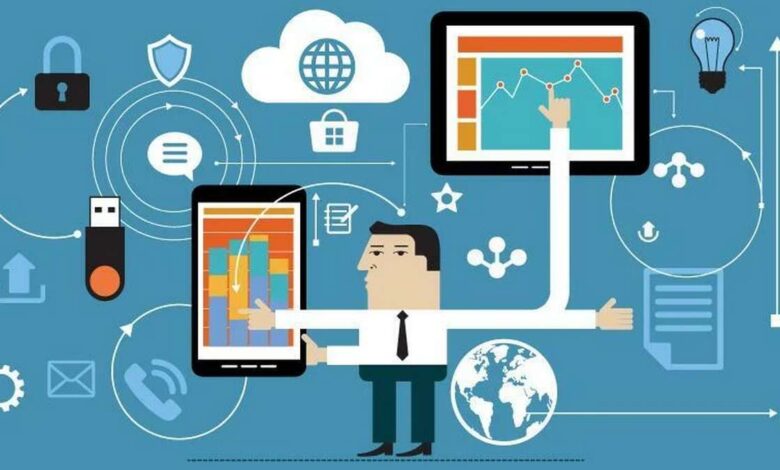What are single-purpose devices? (and how MDM can help manage them)

Major enterprises across different industries are deploying single-purpose devices in rapid numbers. By giving customers access to self-service applications, businesses have realized that single-purpose devices can lower overheads while improving customer satisfaction.
However, these devices can come across software maintenance and security challenges that can cause financial loss and damage brand reputation. Here, the significance of Enterprise Mobility Management (EMM) becomes evident. EMM is pivotal for businesses, ensuring data security, regulatory compliance, and streamlined operations while enhancing productivity and providing a flexible, controlled environment for mobile device usage. Its comprehensive approach addresses the challenges of a mobile ecosystem, making it indispensable for modern enterprises navigating the complexities of various devices and applications.
Mobile device management (MDM) tools aim to alleviate these challenges, making sure they remain efficient cost savers and even profit centers for industries.
What are single-purpose devices?
As per Google’s Android Developer website, a single-purpose device (or dedicated device) is a “company owned device that fulfills a single use case, such as digital signage, ticket printing, or inventory management. This allows admins to further lock down the usage of a device to a single app or small set of apps, and prevents users from enabling other apps or performing other actions on the device.”
Dedicated devices serve a single specific purpose, running a single app or specific apps or operating in kiosk mode. They are corporate-owned devices mainly used for always-on and mission-critical business functions.
Industry-wide use cases of single-purpose devices
- Food: Self-ordering kiosks are a great way for customers to browse the menu, and place and pay for their orders. It also offers a platform for restaurants to market new offerings.
- Banking: An ATM machine provides customers the ability to complete basic transactions without the help of a branch representative or teller.
- Transportation: Airport kiosks allow passengers to check-in, print boarding a pass, check their luggage, and request seating changes, essentially automating all basic tasks.
- Healthcare: From checking into GP surgeries, hospitals and clinics, to processing prescription payments and self-checkout after an appointment, kiosks can offer self-service for patients.
- Education: The usage of tablet kiosks in classrooms can make the learning experience more interactive and encourage collaboration.
- MDM for Logistics: Single-purpose devices can be used as ELDs (electronic logging devices). Employees can keep track of goods and use dedicated devices for inventory management.
- Retail: Digital signages are low cost alternatives for retailers to market their products or services. They can be placed in shopping malls or on busy city streets with significant footfalls.
The key role of MDM in single-purpose device management
Many dedicated devices are purpose-built but do not necessarily require proprietary software to do the job. Plus, single-purpose devices are owned by corporations and distributed across multiple geographical locations. To ensure devices are up and running all the time, IT administrators need complete control over these devices. An MDM tool is essential to reduce downtime and troubleshoot an issue users may face.
How does MDM help?
- Security: When single-purpose devices are managed and enrolled using an MDM tool, it helps IT teams to push security policies and regulations remotely across all the devices, which protects the corporate data stored from exposure in cases of device loss or theft.
- Updating device app and software: After business apps are loaded on the devices, it is important to update the applications regularly to maintain app performance. Similarly, updating the device OS periodically is also necessary for continuous performance. IT teams can push (or delay) OS updates for managed single-purpose devices from the MDM dashboard. They can also update applications, and assign or reassign app licenses from the dashboard.
- Rebooting devices periodically: Continuously running devices requires a regular downtime. To ensure improved device performance for unattended devices, remote reboot capabilities are essential.
- Reduce device downtime and overhead costs: To reduce device downtime and logistics costs for fetching an error-prone device, Scalefusion offers Remote Cast and Control to remotely mirror the device screen and extend support to resolve issues. For select Android devices, IT admins can take control of the device screen and navigate the screens to resolve the issues.
- Improve employee productivity and customer experience: Single-purpose devices can be preloaded with necessary enterprise apps and corporate content when enrolled in an MDM solution. This gives employees instant access to corporate data for effective decision-making, problem-solving, operational efficiency, and inventory management. Additionally, MDM offers bulk and over-the-air enrollment of single-purpose devices, enabling the workers to use them out of the box.
Wrapping Up
Single-purpose devices are helping boost productivity and enabling companies to use resources more efficiently. But it comes at a cost. Failed software deployments can shut down the entire device fleet, resulting in a loss of revenue. Additionally, maintaining adequate security to protect sensitive corporate data from unscrupulous users is equally important. Scalefusion MDM can effectively help in managing those challenges.